Premium Only Content
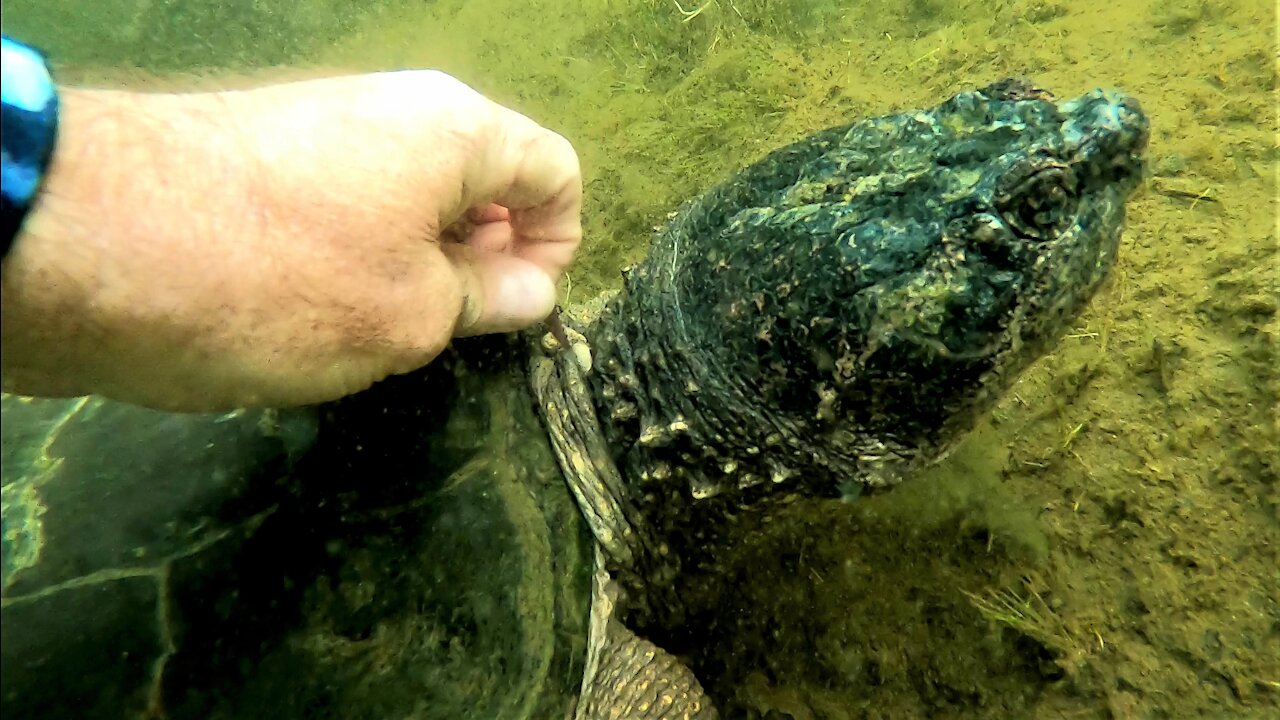
Gigantic snapping turtle allows scuba diver to pull leeches from its neck with his bare hands
Common snapping turtles have a reputation for being vicious and dangerous animals. Rumors and myths tell us that they can snap a broomstick in half with their powerful jaws and many people claim to know somebody who has lost fingers, or even a hand, to these "monsters". But the truth is that they are gentle and curious when they are in the water, and defensive, not aggressive, on land.
Most people only ever encounter these large turtles as they cross roads in search of a place to lay their eggs, or new feeding and breeding territory. Approaching one on dry land is likely to trigger a "strike" with their long neck and a "snap" as they clamp their jaws shut in the air. Unwary people can definitely experience a painful bite and they are capable of drawing blood. But this is only done when they feel threatened. They cannot fully retract their heads and the aggressive appearing display is a means of warding off predators. They cannot move quickly on land and they cannot actually eat on land, so they are never trying to capture food when they act in this manner.
In the water, common snapping turtles are capable swimmers and they feel very little need to bite or snap, unless they are grabbed and handled. They will simply swim away. They are much more intelligent and inquisitive than people realize and they will occasionally approach swimmers for a close look. They might even swim up and sniff at a set of toes or fingers left hanging in the water, but they seldom bite people, and their has been no documented case of a finger or toe ever being bitten off by a common snapping turtle. Alligator snapping turtles are a much different species, being much larger, much more powerful and having very different behaviour. An alligator snapping turtle is very capable of inflicting serious injury and even amputation on human.
This is a very large common snapping turtle who lives in a remote lake in Northern Ontario, Canada. It is unlikely that he has encountered many humans and even more unlikely that he has ever encountered a scuba diver. As these scuba divers were returning to their cottage from a deeper dive, they encountered this large male in the shallow water near their dock. They had seen this turtle a few times in years past, recognizing him from his missing front claw and extremely curious nature. He approached them eagerly as soon as he saw them swimming and he swam around them for several minutes. They saw that he had a large mass of leeches on his neck and they decided to try pulling them off.
Ordinarily, snapping turtles would never allow a human to touch or pull on them, but this one seemed very content to allow the diver to tug on the leeches with his bare hands. The leeches held on tight and the diver had to pull hard to dislodge them. The turtle repeatedly turned and swam up to them, seemingly able to understand what they were doing. It is very possible that he was simply curious about them, but he let them pull on the leeches for more than 10 minutes before they ran low on air and had to surface. The divers were able to pluck at least twenty of the bloodsuckers off the turtle's neck and shell.
Leeches are parasites that deprive animals of nutrients and can weaken them over time. A few of them would do no harm to a snapping turtle of this size, but a large number could have an adverse effect on the poor turtle. The divers have nicknamed this turtle "Todd (Terror of Da Deep) as a family joke since they do not share the common fear of these amazing animals.
Common snapping turtles eat vegetation and dead and decaying animals and fish. They cannot catch a healthy fish. They are extremely important for keeping lakes and rivers clean and free of bacteria from rotting animals. A snapping turtle (or several) in your lake is a very good thing!
-
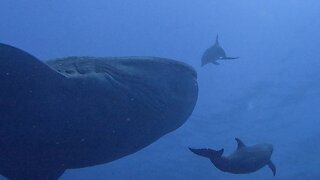 0:53
0:53
WildCreatures
1 month ago $2.32 earnedDolphins escort whale shark through pack of stunned scuba divers
9.17K6 -
 0:43
0:43
KristysWorld
4 years ago $41.34 earnedScuba diver befriends critically endangered hawksbill sea turtle
65.4K3 -
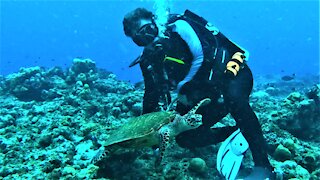 0:58
0:58
BigSexysPlayground
4 years ago $75.62 earnedBaby sea turtle swims straight to scuba diver to hang out with him
8.41K39 -
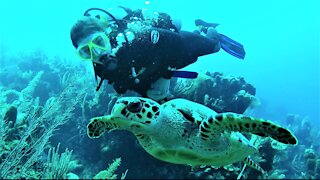 0:50
0:50
BigSexysPlayground
4 years ago $9.70 earnedEndangered hawksbill sea turtle calmly swims over the reef with young scuba diver
2.68K11 -
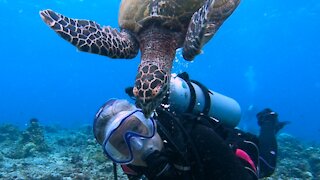 1:03
1:03
KristysWorld
5 years ago $1.64 earnedJealous sea turtle chases smaller turtle away from "his scuba diver"
4.57K1 -
 0:28
0:28
BigSexysPlayground
5 years ago $0.68 earnedRare and endangered sea turtle calmly eats sponges as scuba diver watches
2.17K -
 0:34
0:34
WildCreatures
5 years ago $8.36 earnedAffectionate grouper fish wants love from his scuba diver friend
1.99K3 -
 0:48
0:48
Sealdiver
5 years ago $6.53 earnedIncredibly friendly seal can't stop hugging scuba diver
148K9 -
 3:58
3:58
WildCreatures
5 years ago $121.18 earnedGigantic snapping turtles found in mud hole in the woods
36.5K59 -
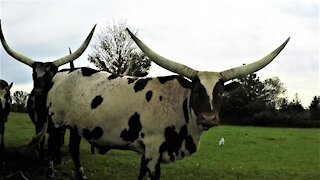 0:49
0:49
WildCreatures
5 years ago $3.64 earnedCows with gigantic horns casually graze by the side of the road
3.76K4